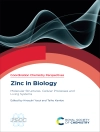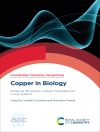Metal ions play key roles in biology. Many are essential for catalysis, for electron transfer and for the fixation, sensing, and metabolism of gases. Others compete with those essential metal ions or have toxic or pharmacological effects.
This book is structured around the periodic table and focuses on the control of metal ions in cells. It addresses the molecular aspects of binding, transport and storage that ensure balanced levels of the essential elements. Organisms have also developed mechanisms to deal with the non-essential metal ions. However, through new uses and manufacturing processes, organisms are increasingly exposed to changing levels of both essential and non-essential ions in new chemical forms. They may not have developed defenses against some of these forms (such as nanoparticles).
Many diseases such as cancer, diabetes and neurodegeneration are associated with metal ion imbalance. There may be a deficiency of the essential metals, overload of either essential or non-essential metals or perturbation of the overall natural balance.
This book is the first to comprehensively survey the molecular nature of the overall natural balance of metal ions in nutrition, toxicology and pharmacology. It is written as an introduction to research for students and researchers in academia and industry and begins with a chapter by Professor R J P Williams FRS.
Table of Content
Overview;
Sodium: Its Role in Bacterial Metabolism;
Potassium;
Magnesium;
Calcium;
Vanadium;
Chromium;
Molybdenum and Tungsten;
Manganese;
Iron in Eukarya;
Iron Uptake and Homeostasis in Prokaryotic Microorganisms;
Iron-Sulfur Clusters;
Ferritin and its Role in Iron Homeostasis;
Cobalt and Nickel;
Platinum;
Binding, Transport and Storage of Copper in Prokaryotes;
Binding, Transport, and Storage of Copper in Mitochondria;
Binding, Transport and Storage of Copper in Eukaryotes;
Silver;
Gold;
Metallothioneins;
Zinc;
Cadmium;
Mercury;
Antimony and Bismuth;
Actinides in Biological Systems;
Aluminium;
Binding, Transport and Storage of Lead;
About the author
Wolfgang Maret FRSC obtained his MSc (chemistry) and Ph D (natural sciences) from Saarland University, Saarbrücken, Germany. After postdoctoral research at the University of Chicago (Department of Biophysics &Theoretical Biology), his first faculty appointment was at Harvard Medical School. In 2002, he joined the University of Texas Medical Branch in Galveston, Texas as an Associate Professor. He is now a Professor of Metallomics at King’s College London, London, UK. His research interests began with the catalytic mechanisms of metalloenzymes as investigated with spectroscopic and kinetic methods and continued with the role of metal ions in health and disease, the molecular mechanisms of how proteins control metal ions, and the cellular mechanism of how metal ions control protein structure and function.
Anthony G Wedd is Tasmanian by birth and holds both Ph D and DSc from the University of Tasmania. He spent a postdoctoral period with Professor Joseph Chatt (University of Sussex) before becoming a staff member at La Trobe University in Melbourne, Australia. He transferred to the University of Melbourne in 1991 as a Professor of Chemistry. His long term interests have been in polyoxometalate cluster chemistry and in biological inorganic chemistry, and particularly the relevant chemistries of molybdenum, tungsten and copper.












